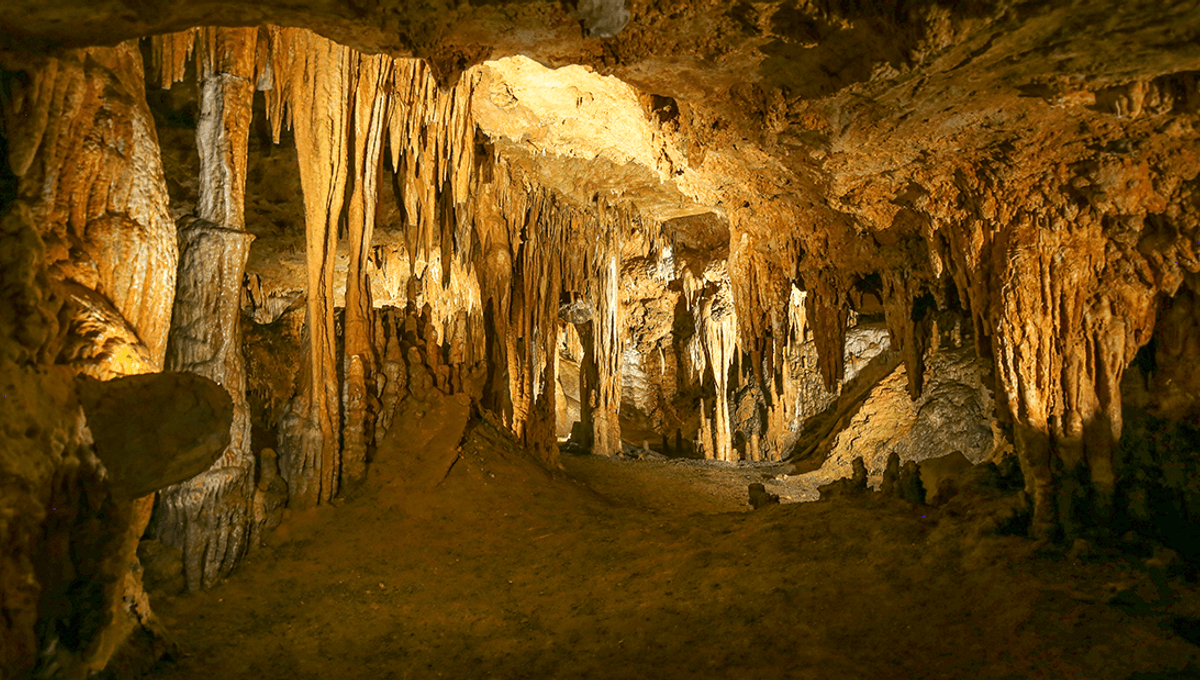
Grand pianos are pretty big, being sort of like a Casio keyboard for musicians with a lot of floor space. But the biggest instrument in the world far dwarfs it, occupying a 1.5-hectare (3.5 acre) cave.
The cave was first discovered on August 13, 1878, by tinsmith Andrew Campbell and his nephew. Exploring the caverns – the largest in the East of the USA – the two found themselves looking at a vast expanse of stalactites and stalagmites, lit only by their own candles. “It is safe to say,” a report from the Smithsonian from 1880 reads, “that there is probably no other cave in the world more completely and profusely decorated with stalactite and stalagmite ornamentation than that of Luray.”
The cavern’s formation began hundreds of million years ago, when the area was part of an ancient sea floor. As time went on, sediment compacted to form the limestone known as dolomite. When two continents collided 300-500 million years ago, forming the Appalachian Mountains, the rock was forced upwards and became the area now known as “Cave Hills“. Caverns formed as acidic water seeped through cracks in the rock, before stalactites and stalagmites grew from calcium carbonate deposited by water droplets.
It wasn’t long after the cave’s discovery that people started noticing the acoustic properties of the cave, with an 1880 book on the cave reporting that concerts were held there.
“The Luray Band with their instruments provided the necessary music,” the book reads. “As may be imagined, the effect was both striking and queer. The brilliant lights set off the Ball Room to its best advantage, and the music echoed loudly back and forth through Giants’ Hall.”
More relevant to the musical instrument the cave would become, the author notes that stalactites “when gently struck by the guide with his finger give out notes of charming sweetness”.
Years later in 1954, mathematician, electronics engineer, and possessor of fanciful surname Leland Sprinkle and his son toured the caverns, when a tour guide demonstrated these stalactites of different sizes gave off different tones.
Rather than think “ah cool” and move on with his life like so many other tourists, he decided to make the world’s largest musical instrument.
Known as the “Great Stalacpipe Organ”, Sprinkle took three years shaving down stalactites across the cave to produce the correct notes, while two of the 37 were perfect as they already were. He then created a system where pressing the keys of an organ sends an electrical signal to a mallet, making it strike the corresponding stalactite.
The result is pretty incredible, and highly variable depending on where you are stood in the cave.
“The acoustics in a cave are not uniform,” archaeoacoustic scientist David Lubman told PBS in 2017. “There are places where it’s not very reverberant at all, other places are more reverberant. The more porous or bumpy a cave wall is, the less the sound will echo.”
The instrument is not easy to play, as nearly a second passes between the player pressing a note and them hearing it. On top of this, the stalactites are spread throughout the cave, making the time it takes to get to the organist variable. Rather than subject musicians to this absolute nightmare, the instrument is now automated as it plays to tourists.
[H/T: NPR]
Source Link: Deep Inside Virginia’s Luray Caverns Is The World's Biggest Musical Instrument